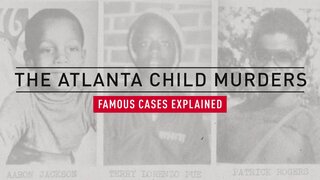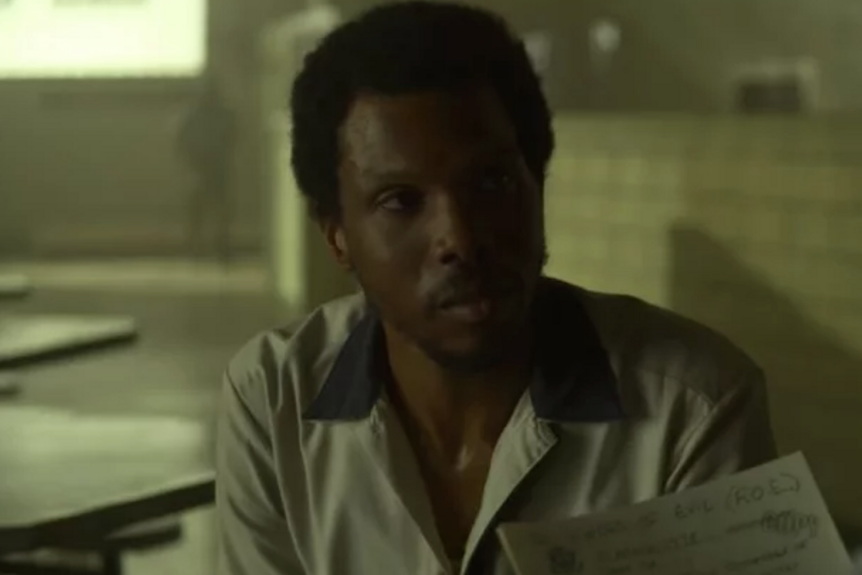Create a free profile to get unlimited access to exclusive videos, breaking news, sweepstakes, and more!
How William Hance's Murders Forced 'Mindhunter' Investigators To Consider Race
William Henry Hance, who murdered four women from 1977 to 1978, is the basis for a character in the second season of "Mindhunter."

Ever since former FBI agent Robert Ressler began researching killers in the 1970s, the psychology behind murderers — what makes them kill and how do they pick who they kill? — has been a source of fascination for many. In Netflix's "Mindhunter," loosely based on early personality profiling done by Ressler and partner John Douglas, the question of how race also plays into understanding crime and justice comes to the fore as a pair of fictional detectives inspired by the real-life FBI duo looks into the antisocial behavior of a character inspired by William Henry Hance, an actual criminal who took the lives of four women between 1977 and 1978.
So, who was the real-life William Hance and how did race play a factor in his capture and sentencing? William Hance, a black former soldier hailing from Georgia, was responsible for the murder of four women, including two black prostitutes named Gail Faison (aka Gail Jackson) and Irene Thirkield, according to The New York Times.
The year of Hance’s crimes, the town of Columbus, Georgia had also seen a spate of killings, some of which were ultimately discovered to be the work of Carlton Gary, nicknamed the Stocking Strangler. Gary had fatally attacked several elderly white women. According to Ressler's book "Whoever Fights Monsters," police were at first unsure if the deaths of the two prostitutes, Faison and Thirkield, and the deaths of these older women were in any way related, speculating Gary may have been behind these two murders as well.
Before he was caught, Hance had constructed an elaborate ploy to draw investigators away from finding him. Hance had written to police pretending to be a cabal of white vigilantes identifying themselves as "The Forces of Evil." In this guise, Hance had demanded ransom for victim Gail Jackson, who he had — in fact — already murdered.
"The letter cautioned the authorities not to make too much of the fact that the letter was written on military stationery," from the base where Hance had worked, wrote Ressler, as "anyone could get hold of that, the writer suggested."
It was Ressler who eventually put together the psychological profile on Hance, insisting Jackson's killer was probably not seven white men, but was likely one black man, which is how the race of both the suspects and the victims became a factor in the investigations of Hance and the Stocking Strangler, as well as as an element of early psychological profiles of criminals, as experts had already begun observing that murderers often kill within their own racial group.
Using the evidence put together into a profile by Ressler, the Georgia Bureau of Investigation was able to track down Hance and arrest him, at which point he confessed to the killings of Faison and Thirkield along with the murder of another woman, Karen Hickman, at Fort Benning in September 1977. But the topic of race in regards to crime again became a discussion point in the fallout of Hance’s capture.
Hance was ultimately sentenced to death for his crimes, but it was a controversial ruling, as there were considerable doubts about his mental state.
His IQ was said to be 76 after an evaluation in 1984, although a later test in 1987 determined his IQ to be 91 (those scoring below 70 are generally believed to be mentally impaired), according to a separate New York Times report. Although he was not found to be psychotic, a clinical psychologist had declared that he was not capable of assisting "in an appropriate, rational way" in his own defense — yet Hance was allowed to serve as his own co-counsel during his trial anyway, generating decades of discussions about bias in the criminal justice system.
During the trial, the sole black juror had objected to the death penalty for Hance.
"I believe that the death penalty is right for people who commit murder when they are in their right mind," wrote the juror, Gayle Lewis Daniels, in a sworn affidavit. "I did not vote for the death penalty in Mr. Hance's case because I did not believe that he knew what he was doing at the time of his crimes."
Daniels said that her voice was summarily ignored, allowing the other jurors — all of whom were white — to say they had reached the unanimous decision required by Georgia to put someone to death.
She feared being accused of perjury were she to contradict the foreman’s pronouncements: "I feel terrible, as if I had a chance to save a life and didn't," Daniels said. Patricia LeMay, another juror on the trial, would later confirm Daniels' claims, adding that openly racist sentiments were expressed by several members of the jury. In requests for clemency that were ultimately denied, Hance's lawyer, Gary Parker, compared the court's decision as akin to lynching, according to The New York Times.
"If you want to see the judicial system at its worst, watch a death penalty case, particularly in the South," said Parker at the time.
Hance was executed by electric chair on May 31 of 1994, only hours after the Supreme Court decided not to hear his appeal. In his dissent, Justice Harry Blackmun declared, “There is substantial evidence that William Henry Hance is mentally retarded as well as mentally ill. There is reason to believe that his trial and sentencing proceedings were infected with racial prejudice. One of his sentencers has come forward to say that she did not vote for the death penalty because of his mental impairments,” according to The New York Times.
The issues about race raised by the Hance crimes would inform Ressler’s investigations of the so-called Atlanta Child Murders, which in real life occurred between 1979 and 1981 and are also the subject of the second season of “Mindhunter." During these two years, the bodies of 29 children and teens were found throughout the city of Atlanta, prompting a manhunt that was criticized as lackadaisical due to the fact the victims were primarily black.
Wayne Bertram Williams, who maintains his innocence, was arrested and convicted for two of the murders attributed to the killer.
The case remains controversial to this day, with Atlanta mayor Keisha Lance Bottoms announcing at a press conference in March that the situation would be re-examined by investigators: "Even though there is evidence tying Williams to these 22 children, he was only ever tried on the cases of two murdered adults," explained Atlanta Police Chief Erika Shields said a press conference. "This has caused some of the victims’ families to believe that they were never afforded justice.”
The complex, interwoven issues of criminal justice and race have become critical in the years since the Hance killings. Ressler’s foundational examinations of serial killings, influenced by his inquiry into Hance, have been vastly expanded into a much more widespread practice of psychological profiling — and his texts about his work have shown how race does play a factor into both crime and justice.



























